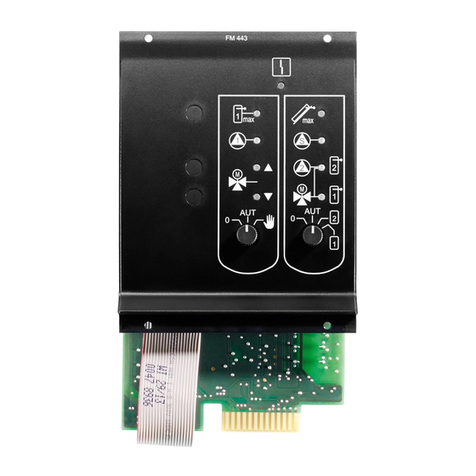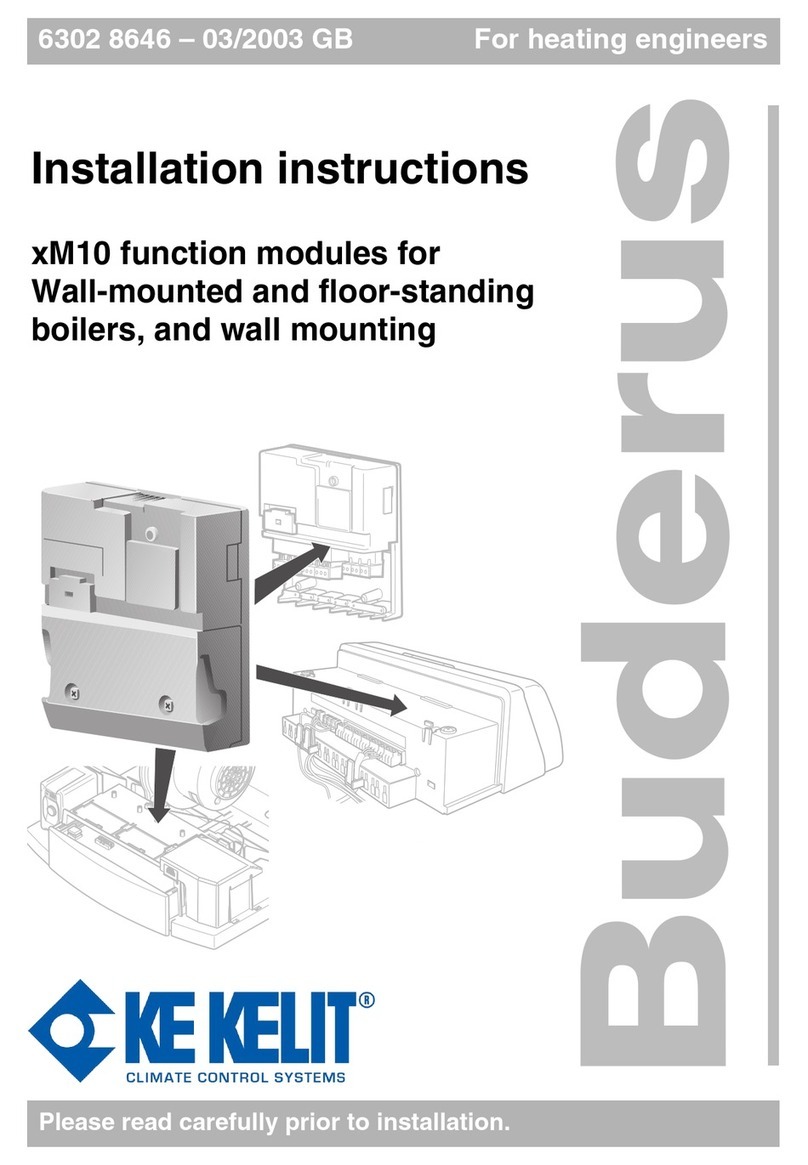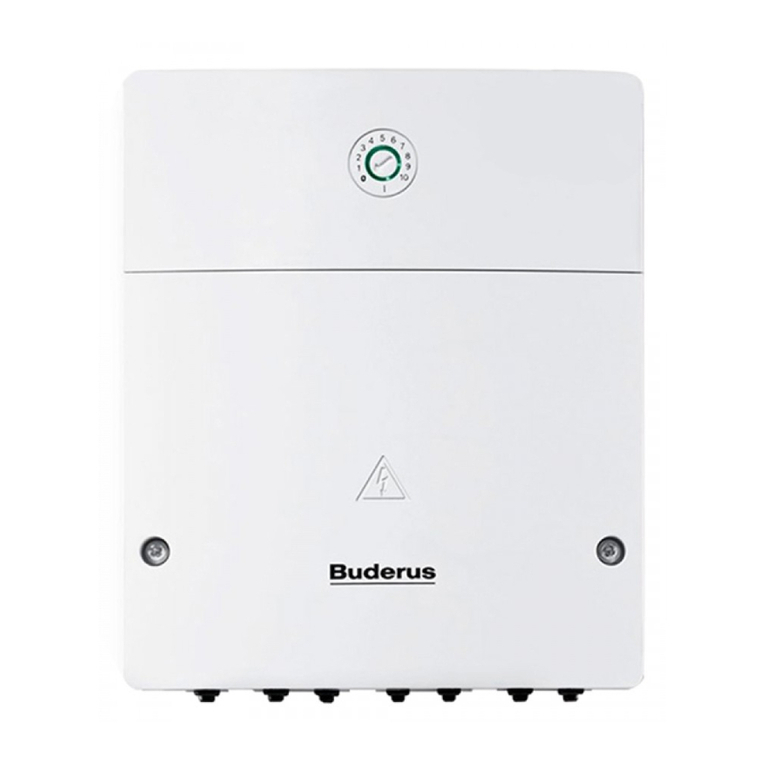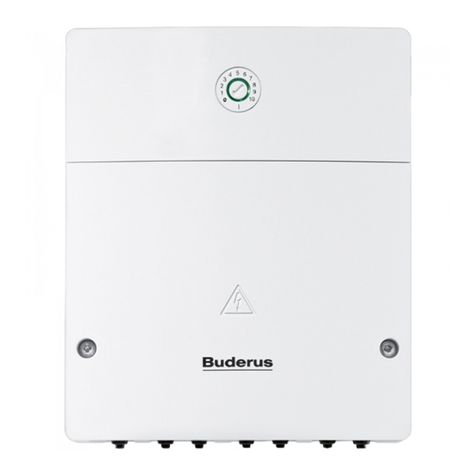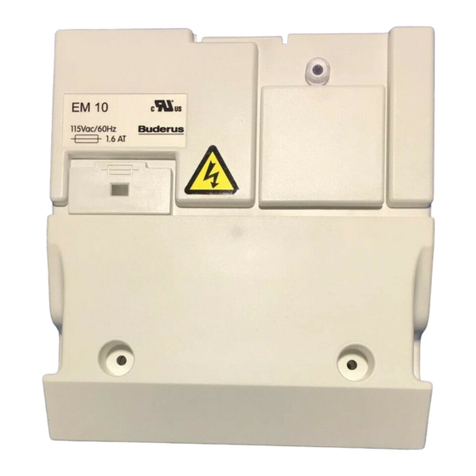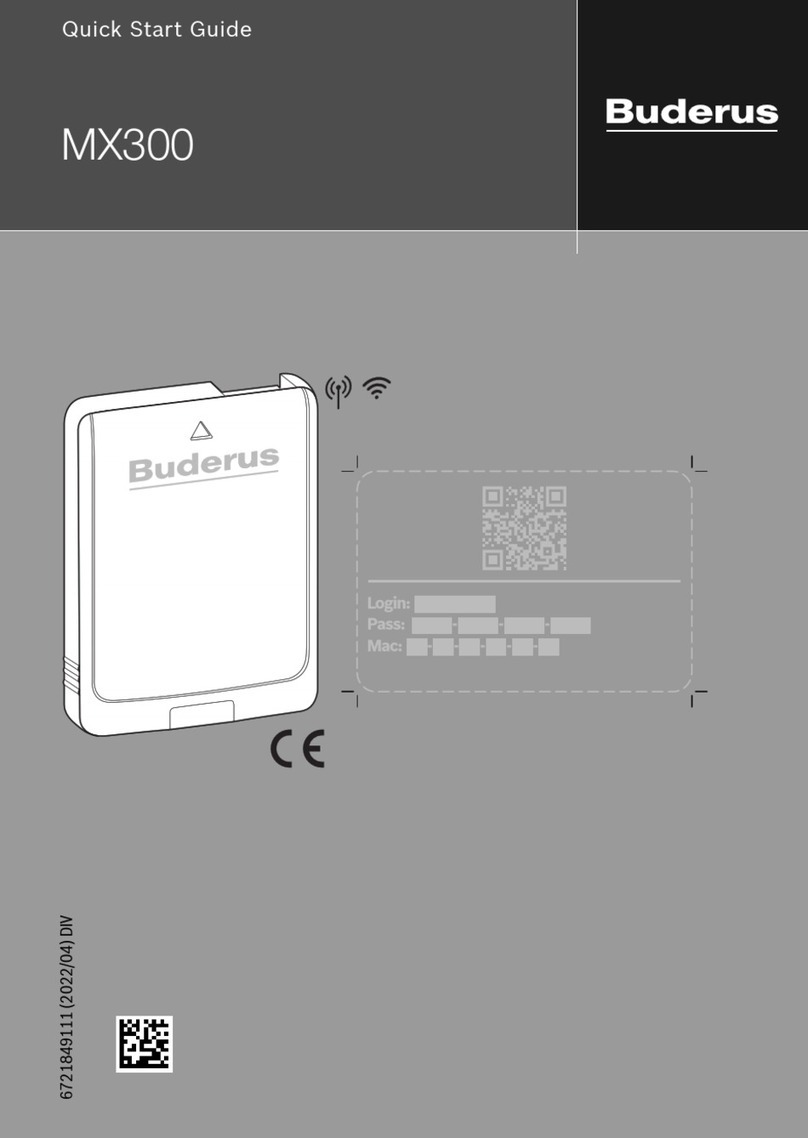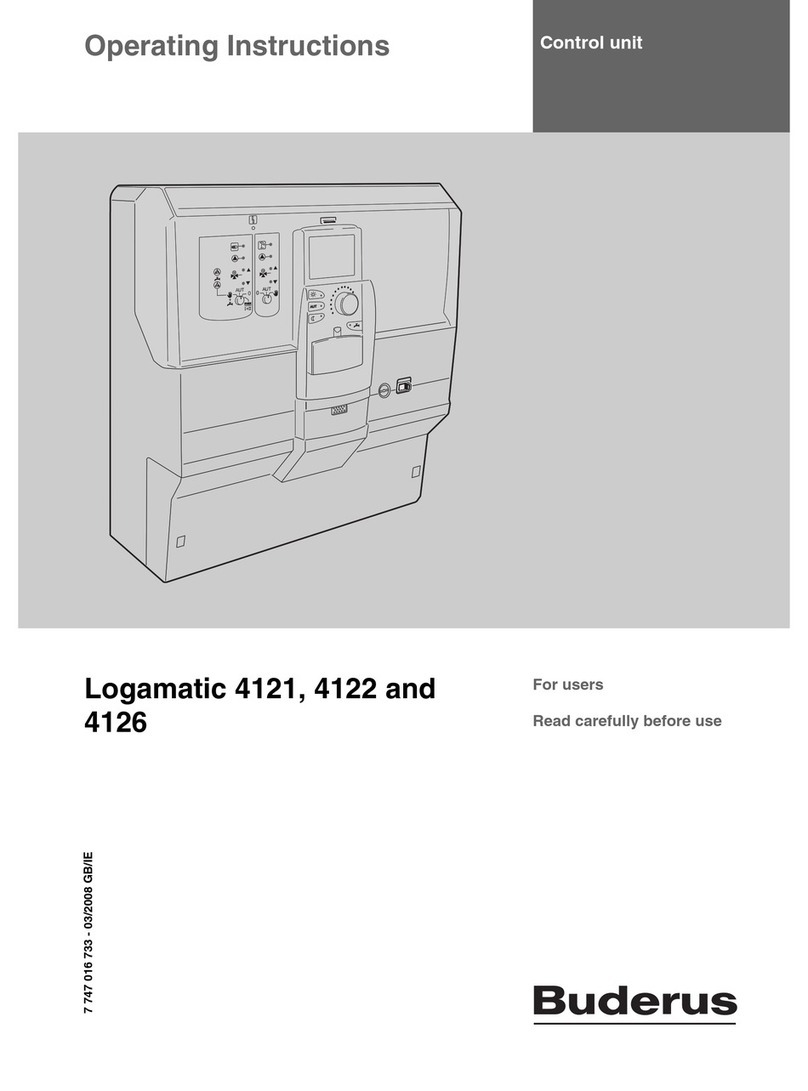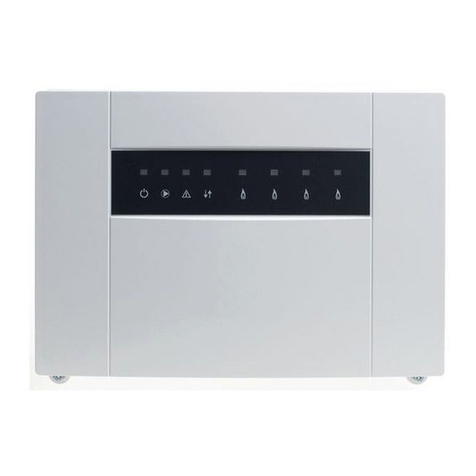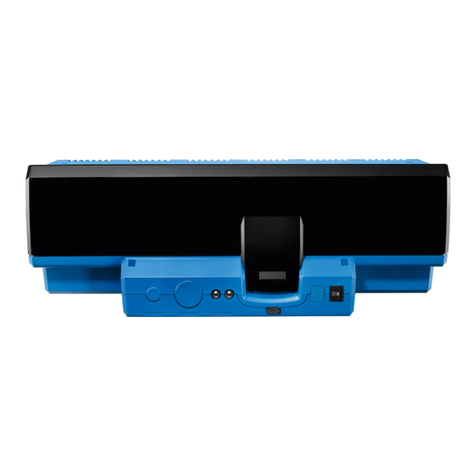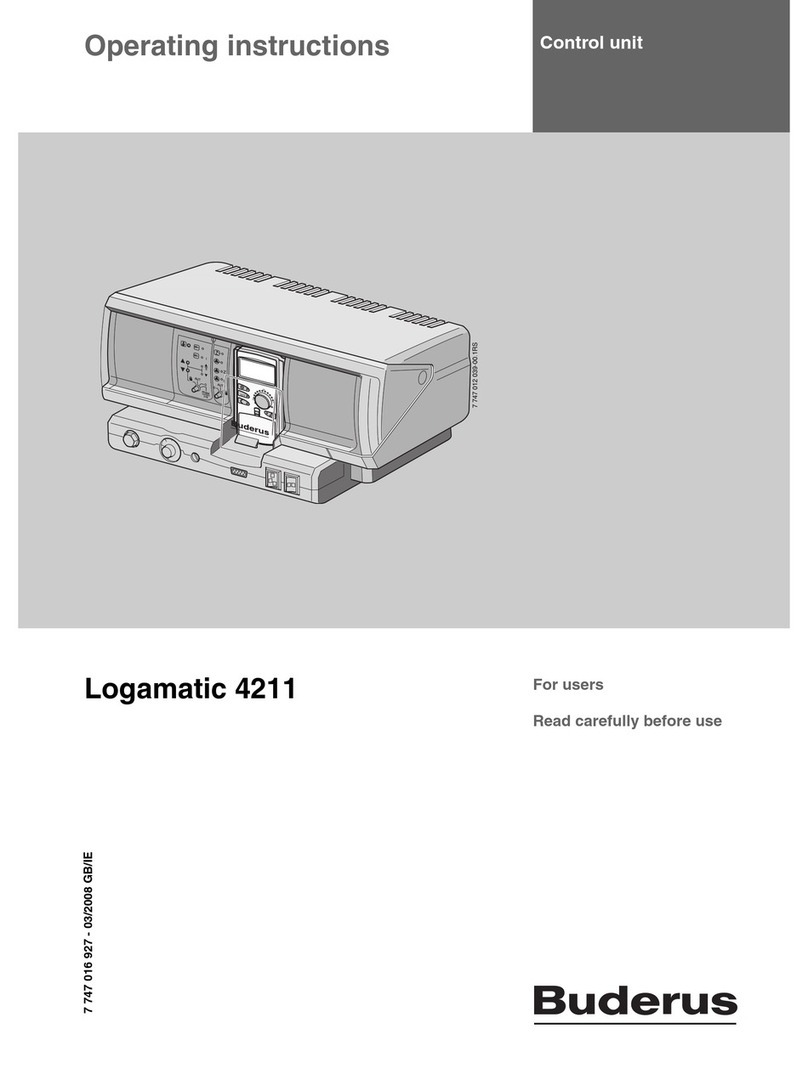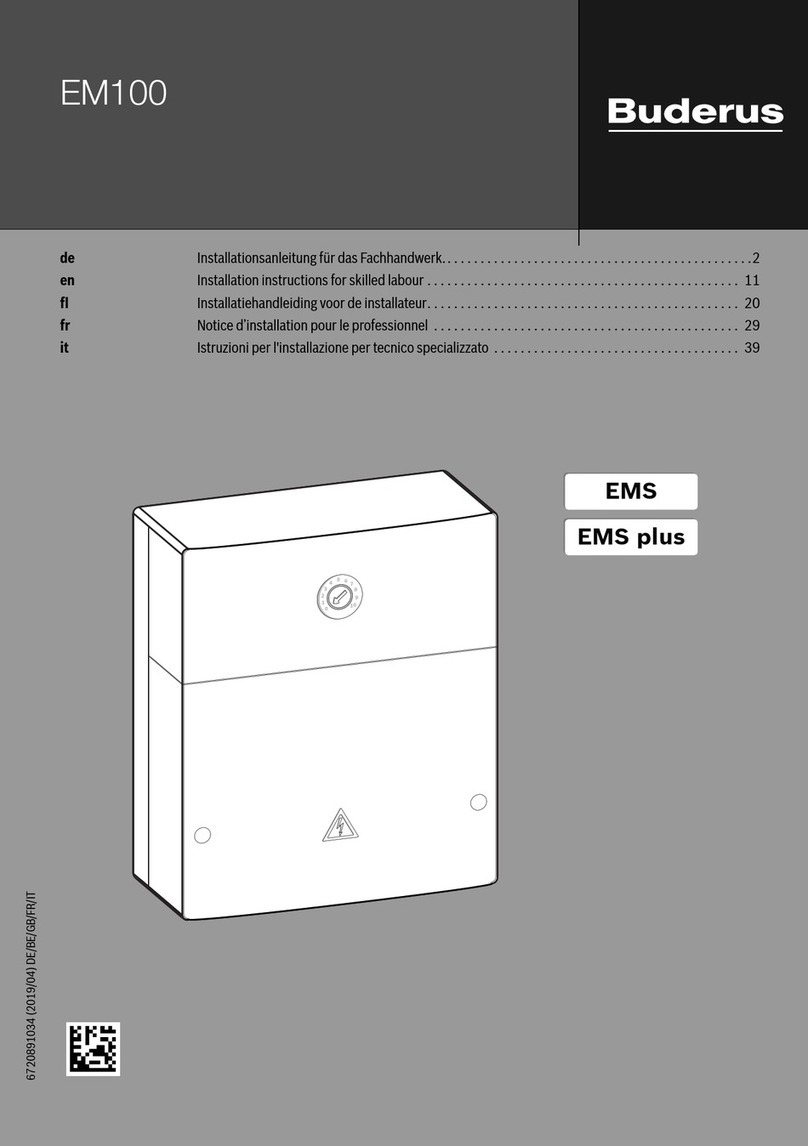2Details about the MCM10 module
MCM10
6
2.7 System integration of the MCM10
2.7.1 Principles of cascade control
When the heating appliance generates a heat demand
(ÆTab. 5, system versions 1, 2, 3, and 4), initially one
heating appliance is started and, if required, its heat
output is raised to its maximum nominal power. Only then
will another heating appliance be started.
If excessive heat is being generated, heating appliances
are controlled one after another in sequence without
delay down to their respective minimum nominal power,
and then shut down until heat demand and generation
match. With system version 4 all appliances are shut
down simultaneously.
The MCM10 module automatically determines the
sequence in which the heating appliances are controlled.
The MCM10 module safeguards an even distribution of
the burner hours of operation for all heating appliances.
This takes into account heating and DHW. This increases
the heating appliance service life. If the power supply to
the MCM10 module is interrupted, the hours run meters
in the MCM10 module are reset to zero.
As soon as a heating appliance is not able to start (DHW
heating for a directly-connected hot water tank, heating
appliance fault, communication fault with MCM10
module), another heating appliance will be started
automatically to cover the heat demand.
2.7.2 Heating controls for MCM10 cascade
systems
The MCM10 modules stage the heating appliances
based on the heat demand calculated. For control
according to the heat demand, the MCM10 modules
always require heating system controls (ÆFig. 12,
terminals H, I or J, page 19). Depending on the heating
system controls, there are four possible system versions
(ÆTab. 5).
One MCM10 module can control up to four heating
appliances. By connecting up to four MCM10 modules,
up to 16 heating appliances can be linked to form a single
cascade (ÆFig. 12, page 19). In this case, one MCM10
module controls the cascade (MCM10 master).
Depending on the heating system controls used, a
cascade system with up to 4 or up to 16 heating
appliances can be created. The maximum number of
heating appliances that can be connected and the
number of MCM10 modules required for the different
systems are shown in Tab. 5, page 8.
The MCM10 module controls the entire boiler loop
(primary loop including the low loss header). All other
heating system components (secondary side of the low
loss header, such as the heating zones, hot water tank)
can be regulated by a weather-dependent heating
controller with a 2-wire BUS interface and additional
modules (WM10, MM10...). Contact the manufacturer for
further details. You will find the relevant address on the
back cover.
Heating appliances of any output can be part of a
cascade.
2.7.3 Water heating with MCM10 cascade
systems
Hot water tanks can be connected hydraulically and
electrically directly to a heating appliance (storage tank
model).
• Water heating is controlled by the heating appliance.
During a DHW demand, this heating appliance will not
be called by the MCM10 module. In case of demand,
another heating appliance may be started.
• If water heating is timed using a heating system control
with 2-wire BUS connection, the heating appliance
with the storage tank must be connected to the
MCM10 module (master) via terminals 17 and 18.
2.7.4 Internal frost protection function
The MCM10 module is equipped with an internal frost
protection function: if the supply temperature falls below
45 °F ( 7 °C ), a heating appliance starts and runs until a
supply temperature of 60 °F (15 °C) has been achieved.
Any heating pump that is connected to the MCM10
module will also run (Æparagrahp 2.7.5).
BConnect the supply temperature sensor to the MCM10
master module if the internal frost protection function is
required.
Note that, for the correct function, only one
heating system control/building management
system may be connected.
The different system versions require the
connection of certain accessories (supply
temperature sensors, outdoor temperature
sensors, heating pumps, and heating system
controls) (ÆTab. 5, page 8).
If the user wants to prepare hot water using
the 3-way valve of the heating appliance and
he wants to continue supplying the heating
zone, he must switch off the warm water
priority on the RC35 for all heating zones
since with the factory settings, hot water
priority is active by default.
The frost protection function of heating
system controls with 2-BUS interface
provides comprehensive system frost
protection. This requires the connection of an
outdoor temperature sensor.
